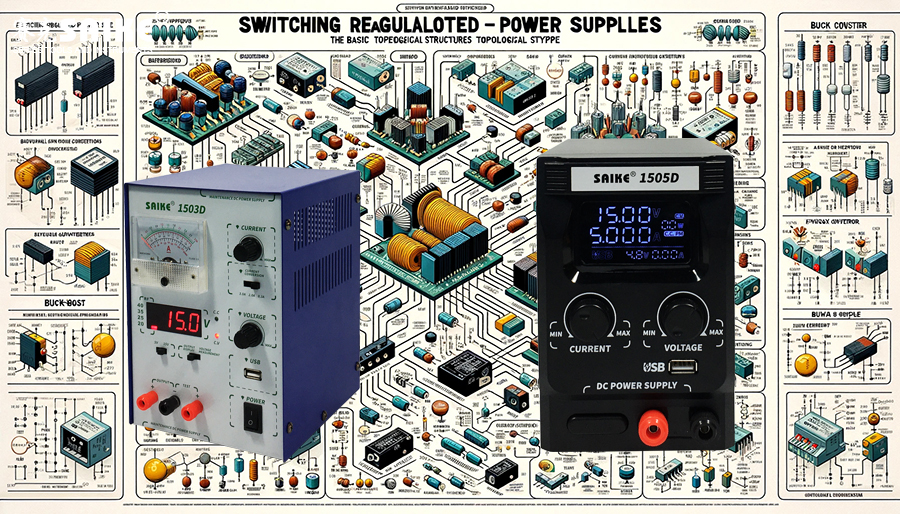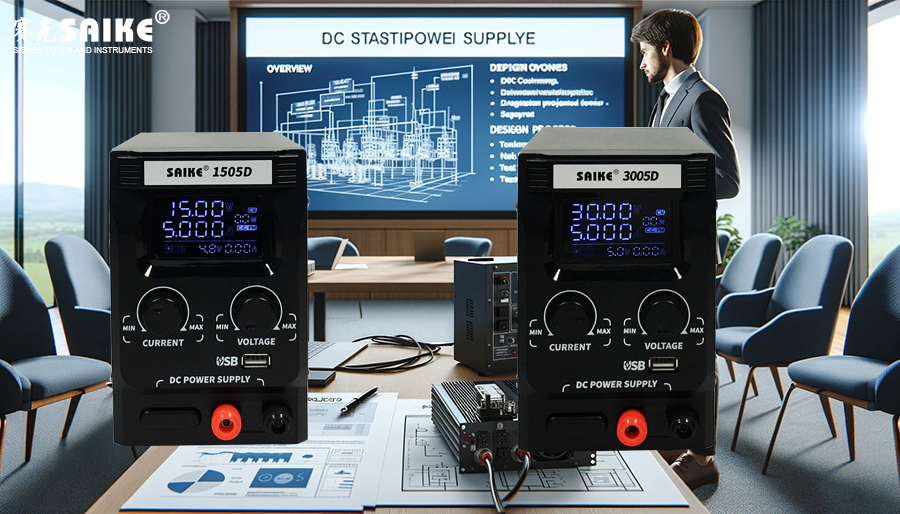
SK-YJ000ZLWYDY-KP 100017
Switching regulated power supplies are an essential component of modern electronic devices, meeting different voltage requirements through efficient electrical energy conversion. Their working principles rely on various topological structures, each suitable for specific application scenarios. This article explores four common basic topological structures in switching regulated power supplies: Buck, Boost, Buck-Boost, and Flyback, along with their working principles and application characteristics.
I. Buck Converter
1.Principle
– The Buck converter reduces the input voltage to the desired lower output voltage through a switching element (usually a transistor), a diode, an inductor, and a capacitor. The switching element periodically turns on and off, regulating the current flowing through the inductor and controlling the amount of energy transferred to the output.
2.Application
– Buck converters are widely used in applications that require a lower voltage from a higher voltage source, such as batteries, for example, in portable devices and in-vehicle electronic equipment.
II. Boost Converter
1.Principle
– The Boost converter employs a switching element, inductor, diode, and capacitor, but its working method allows the output voltage to be higher than the input voltage. When the switching element is off, the energy stored in the inductor is transferred to the output through the diode, generating an elevated voltage.
2.Application
– Boost converters are commonly used in battery-powered devices where a low voltage power supply needs to be stepped up to a higher voltage, such as in LED drivers and portable electronic devices.
III. Buck-Boost Converter
1.Principle
– The Buck-Boost converter combines the characteristics of Buck and Boost converters, capable of providing an output voltage higher or lower than the input voltage. It controls the flow of energy between the inductor and capacitor by adjusting the operation of the switching element to achieve the desired output voltage.
2.Application
– This converter is suitable for situations where the input voltage is unstable, such as in renewable energy systems and battery-powered systems, providing a stable output voltage.
IV. Flyback Converter
1.Principle
– The Flyback converter utilizes a transformer to store energy on the input side and transfer it to the output side at the appropriate moment. Its uniqueness lies in the fact that the secondary side of the transformer can generate one or multiple output voltages independent of the input voltage.
2.Application
– Flyback converters are often used in applications requiring multiple output voltages and electrical isolation, such as power adapters, power supplies for electronic devices, and chargers.
V. Conclusion
The various topological structures of switching regulated power supplies enable them to efficiently meet voltage conversion needs, ranging from simple to complex. Understanding the working principles and applicable scenarios of different topologies is crucial for power supply design and selection. It can help designers choose the most suitable power solution for specific applications. By selecting the correct topological structure, the performance, efficiency, and reliability of the device can be optimized.


